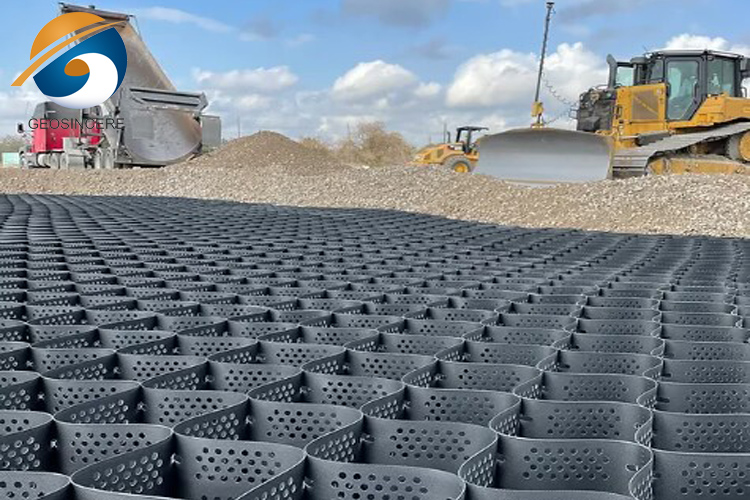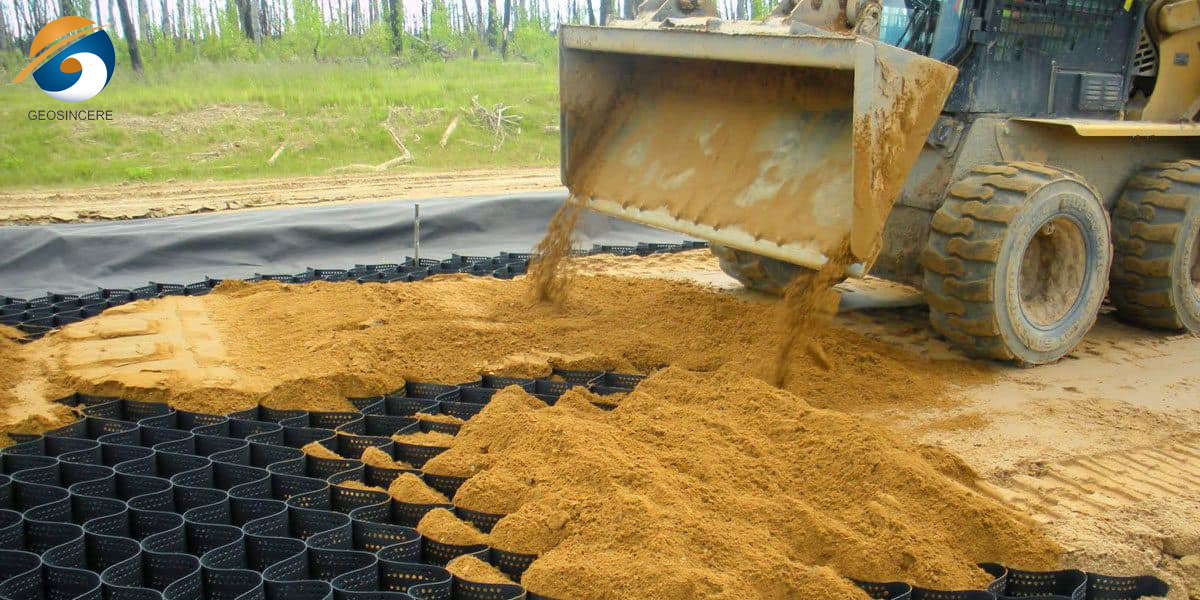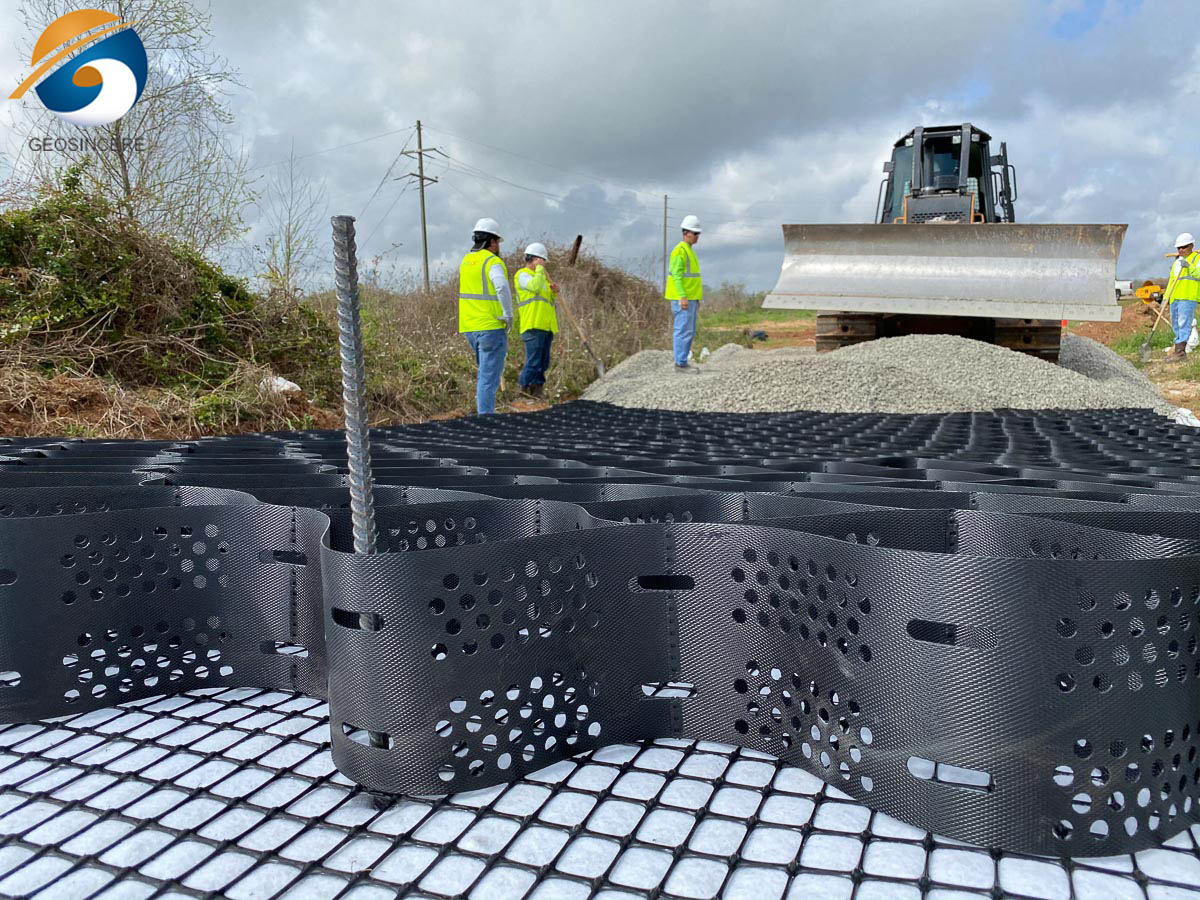How Is the Geocell Installed?
In modern engineering construction, the complexity of geological conditions often becomes an obstacle to the smooth progress of projects. Among them, geocell, as an innovative soil enhancement technology, has gradually gained widespread attention due to its superior stability and carrying capacity. The installation of the geocell can not only effectively improve the bearing capacity of the soil, but also provide lasting support under various terrain and climate conditions.
In this article, we will delve into each step of the geocell installation process, providing insights into best practices, potential challenges, and techniques to ensure successful installation and maximize the advantages of geogrid technology. Let's explore the details of how to effectively install geocell for optimal performance!
1. How Is the Geocell Installed?
1.1 Site Preparation
- Clear the Area: Remove vegetation, debris, and any other obstacles from the installation site.
- Grade the Soil: Level the ground as needed to create a stable base for the geocell.
1.2 Geocell Deployment
- Unroll the Geocell: Lay out the geocell panels on the prepared site. Geocells typically come in rolls or panels that can be expanded.
- Expand the Cells: If using a roll, expand the geocell into a three-dimensional honeycomb structure.
1.3 Anchoring the Geocell
- Stake the Edges: Use stakes or anchors to secure the edges of the geocell to the ground. This helps prevent movement during filling and compaction.
1.4 Filling the Cells
- Select Fill Material: Choose appropriate fill materials (soil, gravel, etc.) based on the application.
- Fill the Cells: Pour the fill material into the expanded cells, ensuring they are filled adequately.
- Compact the Fill: Compact the fill material within the cells to enhance stability and load-bearing capacity.
1.5 Finalizing Installation
- Trim Excess Material: If necessary, trim any excess geocell material or fill.
- Check for Stability: Ensure that the installation is stable and the fill is securely compacted.
1.6 Maintenance
- Regular Inspections: Monitor the installation periodically for any signs of erosion or instability.
2. What Are the Common Problems With Installing Geocell?
2.1 Improper Site Preparation: If the site is not adequately prepared—such as failing to remove vegetation or debris—this can lead to uneven surfaces and poor geocell performance.
2.2 Inadequate Compaction: Insufficient compaction of the subgrade can result in settling after installation, undermining the stability that geocells are meant to provide.
2.3 Incorrect Cell Expansion: Geocells need to be properly expanded and anchored. Incorrect expansion can cause the cells to not perform as intended, leading to failure in load distribution.
2.4 Poor Material Selection: Using substandard geocell materials can lead to durability issues, especially in harsh environmental conditions.
2.5 Environmental Factors: Weather conditions, such as heavy rain or extreme temperatures, can impact the installation process and the performance of geocells if not properly accounted for.
2.6 Inadequate Drainage: Poor drainage design can lead to water accumulation within the geocell, which can compromise the integrity of the structure.
2.7 Improper Installation Techniques: Lack of training or experience among installation crews can result in mistakes that affect the overall effectiveness of the geocell system.
2.8 Insufficient Backfill Material: Using inadequate or unsuitable backfill material can diminish the load-bearing capacity of the installed geocell.
3. How to Maintain the Geocell After Installation?
3.1 Regular Inspections: Conduct periodic inspections to check for any signs of deformation, settling, or erosion. Look for damage to the geocell structure or the surrounding soil.
3.2 Ensure Proper Drainage: Monitor drainage systems to prevent water accumulation within or around the geocells. Clear any blockages to facilitate proper water flow.
3.3 Erosion Control: Implement measures to prevent soil erosion around the geocell area. This could include planting vegetation or using mulch to stabilize the soil.
3.4 Weed Management: Control vegetation growth within and around the geocells. Weeds can disrupt the anchoring and effectiveness of the geocell structure.
3.5 Repair Damaged Sections: If any geocells are damaged, repair or replace them promptly to maintain the integrity of the system.
3.6 Monitor Load Conditions: Keep an eye on the loads applied to the geocell structure. Avoid overloading beyond the designed capacity to prevent deformation or failure.
3.7 Seasonal Maintenance: Pay special attention during seasonal changes, especially in areas prone to heavy rain or snow. Ensure that drainage systems are functioning well and that the geocell is not compromised by freeze-thaw cycles.
3.8 Documentation: Maintain records of inspections and maintenance activities. This helps track the condition of the geocell system over time and can inform future maintenance needs.
4. Summary
The advantages of Geocell installation mainly lie in enhancing soil stability and bearing capacity. By forming a three-dimensional structure, Geocell can effectively disperse loads, reduce settlement and soil displacement, and is suitable for various foundation conditions, especially soft and unstable soils. It also has good drainage performance, which helps prevent soil erosion and therefore plays a positive role in environmental protection and ecological restoration.
If you have any questions or product requirements, please feel free to contact us. We provide free samples and high-quality service.








